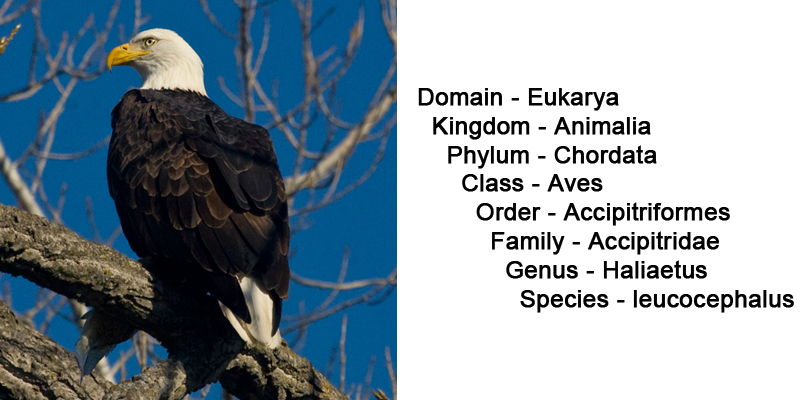| << Chapter < Page | Chapter >> Page > |
Birds in a way resemble fishes. For birds have their wings in the upper part of their bodies, and fishes have two fins in the front part of their bodies. Birds have feet on their under part, and most fishes have a second pair of fins in their under part…”– Aristotle (384-322 B.C), De Incessu Animalium .
Observations and speculations about the similarities and differences of the life forms around us clearly have a long history. Aristotle’s ancient musings about animals pre-date the concept of homologous and analogous structures, which we discussed in the last chapter, but his insights are accurate today. Aristotle was the first to write about his attempts to classify animals into groups, and his classification scheme was the standard for many centuries. Attempts to refine the classification of animals (and other living things) continue even today, as you will see. Those classification schemes, throughout the centuries, have used many different criteria for separating living things into different groups. “How is this thing different from this other thing?” has been the focus of many scientific endeavors. But, as Aristotle recognized in the passage above, it is just as important to ask about the similarities, and not just focus on the differences.
We use the words taxonomy or systematics to describe the activity of classifying and naming living things. There are many ways to divide living things into groups; the ability to recognize and classify things is a deeply-seated and oft-used human activity. Some of these schemes are based on habitat, e.g. water-dwelling creatures vs. land-dwelling creatures or aerial-dwelling creatures. Others are based on internal characters. For example, Aristotle’s two most basic groups were those with blood and those without blood, a grouping scheme that coincidentally neatly separates most of the vertebrates from most of the invertebrates. But most schemes have been based on morphology , such as size, shape, number and proportion of appendages, etc. This sort of classification seems to be easy enough to do, but, as you will see later in this chapter, it can lead to some interesting mistakes.
Finally, it is important to understand that all classification schemes should be viewed as simply being hypotheses . Like any hypothesis, a classification scheme should change, or even be discarded, if new observations contradict the predictions of the hypothesis. This leads to some frustration on the part of some students, because (again) they would like to have some certainty about what they are learning. But a science where everything is certain would be a dead and dusty science, which certainly doesn’t describe the state of taxonomy today, or tomorrow.

After Aristotle, there was not a lot of progress in taxonomy for many centuries. In fact, there may have been negative progress for some of that time, as Aristotle’s system was brushed aside or forgotten. But in the 1700’s a Swedish biologist who went by the Latin name Carolus Linneaus developed a system of biological classification that still underlies the system used today. His big contribution to the discipline was to introduce the concept of using two names to describe the smallest unit of classification, the species . In the Linnean system, every organism has a unique “scientific name”, consisting of a specific epithet preceded by a name for the next highest level of classification, the genus (plural = genera). Higher levels of classification included, in order above the genus, family, order, class, phylum, and kingdom. Subsequently another top level, the domain, was added to this hierarchy, giving us the classification scheme shown above ( [link] ). This bald eagle has the scientific name Haliaetus leucocephalus . There are 7 other members of the genus Haliaetus. The genus is placed in the Family Accipitridae, in the Order Accipitriformes, in the class Aves, in the Phylum Chordata, in the Kingdom Animalia, and in the Domain Eukarya. Biologists refer to a group of organisms, at any level, as a taxon (shorthand for taxonomic unit, plural = taxa). Thus a species is a taxon, as is a Genus, or a Family, or an Order, etc.

Notification Switch
Would you like to follow the 'Principles of biology' conversation and receive update notifications?